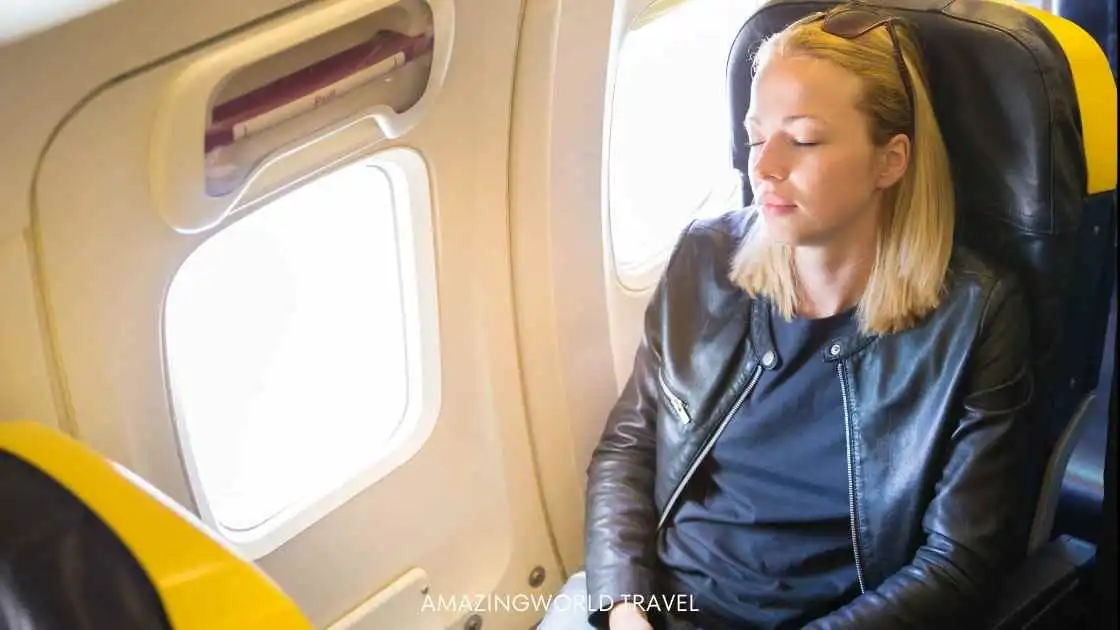How to Find Cheap Flights in 2023: 15 Tips and Tricks
Table of Contents
Toggle
Have you ever wished for a magic wand that could whisk you away to far-off lands without draining your savings? Well, it’s time to uncover the secrets of scoring affordable flights. Whether you’re a seasoned globetrotter or a first-time traveler, this article is your guide to finding cheap flights.
Prepare to dive into a world of tips and tricks tailor-made for budget-conscious adventurers like you. Let’s turn your travel dreams into reality without breaking the bank.
1. Planning in advance
One of the most effective ways to find cheap flights is to plan your trip well in advance. Airlines often release their tickets months in advance, and prices tend to be lower during this early booking phase. By planning ahead, you can take advantage of these lower fares and secure your tickets at a discounted price.
2. Flexibility with travel dates
Being flexible with your travel dates can significantly impact the cost of your flights. Weekdays and off-peak seasons usually offer lower airfare compared to weekends and peak travel periods. Adjusting your travel schedule to avoid popular travel times can help you find cheaper options.
3. Comparison of websites and apps
Comparison websites and apps play a crucial role in helping travelers find cheap flights. These platforms aggregate flight options from multiple airlines, allowing you to compare prices, flight times, and other important details to make an informed decision. Here’s why utilizing comparison websites and apps is an excellent strategy for finding affordable flights:
- Comprehensive search capabilities: Comparison websites and apps have extensive databases that encompass a wide range of airlines, including both full-service carriers and budget airlines. This means you can access a vast selection of flight options, ensuring you have a comprehensive view of available fares and routes.
- Easy comparison of prices: The primary advantage of comparison websites and apps is their ability to display multiple flight options side by side, enabling you to compare prices effortlessly. This saves you time and effort in manually searching multiple airline websites or contacting travel agents for quotes. By comparing prices, you can identify the most cost-effective options for your travel needs.
- Flexible search options: These platforms allow you to customize your search based on various criteria such as travel dates, preferred airports, flexible date ranges, and even specific airline preferences. This flexibility empowers you to tailor your search to your specific requirements and find flights that align with your travel plans.
- Alerts and notifications: Many comparison websites and apps offer features such as fare alerts and notifications. By setting up alerts for specific routes or travel dates, you can receive notifications when prices drop or when a good deal becomes available. This proactive approach ensures that you don’t miss out on potential savings and allows you to book flights at the right time.
- User reviews and ratings: Comparison websites often provide user reviews and ratings for airlines and specific flights. These insights can help you assess the quality of the airline, the reliability of the service, and the overall customer experience. Reading reviews can give you a better understanding of what to expect, enabling you to make more informed decisions when choosing your flight.
- Additional travel services: Some comparison websites and apps offer more than just flight comparisons. They may provide options to book accommodations, car rentals, or even complete travel packages. This allows you to conveniently organize multiple aspects of your trip in one place, potentially saving you time and effort.
Popular comparison websites and apps that you can consider using include Skyscanner, Kayak, Google Flights, Momondo, and Expedia. These platforms have user-friendly interfaces, powerful search capabilities, and reliable data sources, making them trusted resources for finding cheap flights.
4. Utilizing airline rewards programs
Airline rewards programs, such as frequent flyer programs, can be a game-changer for budget travelers. These programs offer a range of benefits and incentives to loyal customers, allowing them to accumulate miles or points that can be redeemed for various rewards, including discounted or free flights.
Here’s how it works:
- Sign up for loyalty programs: To start utilizing airline rewards programs, you need to sign up for the loyalty programs offered by airlines. This process is usually free and can be done either online or through the airline’s mobile app. Once you sign up, you will receive a unique membership number or card that identifies you as a member of the program.
- Accumulate miles or points: As a member of the loyalty program, you can accumulate miles or points by flying with the airline or its partner airlines. The number of miles or points you earn depends on factors such as the distance traveled, the class of service, and your membership tier. Some programs also offer opportunities to earn miles or points through non-flight activities, such as hotel stays, car rentals, or credit card usage.
- Redeem rewards for flights: The accumulated miles or points can then be redeemed for flights. Depending on the program and availability, you may have the option to redeem your rewards for discounted flights or even secure a completely free flight. The redemption process typically involves logging into your account, searching for eligible flights, and selecting the desired reward option. Keep in mind that certain restrictions, such as blackout dates or limited seat availability, may apply.
5. Booking during off-peak seasons
Traveling during off-peak seasons can result in substantial savings on flights. Destination popularity and demand heavily influence ticket prices. By opting to travel during less crowded times, you can find cheaper fares and enjoy a more relaxed travel experience.
6. Taking advantage of flight sales and promotions
Keep an eye out for flight sales and promotions offered by airlines. Many airlines regularly run special promotions, such as flash sales or limited-time discounts. Subscribing to airline newsletters and following their social media accounts can help you stay informed about these opportunities to snag cheap flights.
7. Considering alternative airports
When planning your trip, it’s worth considering alternative airports near your destination. Exploring these options can often lead to significant cost savings and help you stretch your travel budget further. Here’s why:
- Lower landing fees and operational costs: Larger airports, especially those in major cities, often have higher landing fees and operational costs. These expenses are passed on to airlines, which can result in higher ticket prices for travelers. In contrast, smaller or regional airports tend to have lower fees and operational costs, making flights operating from these airports potentially cheaper.
- Competition among airlines: Alternative airports, especially those served by low-cost carriers or regional airlines, may foster healthy competition among airlines. When multiple airlines operate from the same airport, they often engage in price wars and promotional offers to attract passengers. As a result, you may find discounted fares or special deals that aren’t available at larger airports.
- Less congestion and shorter lines: Alternative airports generally have lower passenger traffic compared to major airports. This can translate to shorter lines at security checkpoints, quicker check-in procedures, and less crowded terminals. Not only does this save you time, but it can also contribute to a more relaxed and stress-free travel experience.
- Proximity to your destination: While alternative airports may not be located in the heart of major cities, they are often situated in close proximity to popular destinations. Depending on your travel plans, the cost savings from choosing an alternative airport might outweigh the convenience of landing at a larger, more centrally located airport. Additionally, consider the availability and affordability of ground transportation options from the alternative airport to your desired destination.
When considering alternative airports, keep the following in mind:
a. Research and compare: Use flight search engines or online travel agencies to compare flight options from both major and alternative airports. Pay attention to the total cost, including any additional transportation expenses to reach your destination.
b. Flexibility in travel plans: Being flexible with your travel dates and times can increase your chances of finding cheaper flights from alternative airports. Sometimes, adjusting your departure or arrival by a day or even a few hours can lead to significant savings.
c. Consider the overall travel experience: While cost is an important factor, also consider the overall travel experience when choosing alternative airports. Assess the availability of services and facilities at the airport, such as car rentals, public transportation, dining options, and accommodations nearby.
By considering alternative airports, you can potentially find cheaper flights and make the most of your travel budget. Keep an open mind, do your research, and weigh the cost savings against any potential inconveniences. Exploring new airports can add an element of adventure to your journey while keeping your wallet happy.
8. Opting for budget airlines
In recent years, budget airlines have revolutionized the travel industry by offering low-cost flights to a wide range of destinations. These airlines focus on providing affordable travel options without compromising on safety. Opting for budget airlines can help you achieve significant savings on your airfare. Here’s what you need to know:
- Low-cost fares: Budget airlines specialize in offering discounted fares that are often significantly lower than those of traditional carriers. By operating with a no-frills approach, these airlines eliminate unnecessary expenses and pass on the savings to passengers. This means you can often find great deals on flights, allowing you to allocate more of your travel budget to other aspects of your trip.
- Wide range of destinations: Budget airlines serve a variety of destinations, both domestic and international. They often focus on popular tourist destinations and major cities, providing you with ample options for your travel plans. Whether you’re planning a weekend getaway or a long-haul adventure, budget airlines can offer competitive prices to get you where you want to go.
- Additional costs and services: It’s important to note that budget airlines typically operate on an à la carte model, meaning that additional services may come at an extra cost. These services can include checked baggage, seat selection, in-flight meals, and priority boarding. When comparing prices, factor in these additional costs to get a clear picture of the total expense. By being mindful of your requirements and opting only for necessary extras, you can still enjoy the cost savings of budget airlines.
- Simple and efficient experience: Budget airlines often strive to provide a streamlined and efficient travel experience. They focus on essential services, such as online check-in and automated boarding processes, to minimize waiting times and ensure a smooth journey. While the experience may be more basic compared to full-service carriers, budget airlines prioritize getting you to your destination safely and affordably.
9. Being open to layovers
Direct flights are often more convenient, but they can also be more expensive. Being open to layovers and connecting flights can help you find cheaper options. While layovers may extend your travel time, they can significantly reduce the cost of your flights.
10. Using fare alerts and price tracking tools
Finding cheap flights can be made easier by utilizing fare alerts and price tracking tools. These valuable resources monitor flight prices and notify you when fares drop or when a great deal becomes available. Here’s how you can leverage these tools to your advantage:
- Stay informed with fare alerts: Fare alert services allow you to set up personalized alerts for specific routes and travel dates. When prices for flights on your selected route decrease or hit a specific target price, you’ll receive notifications via email or mobile app. This keeps you updated on the latest fare trends and helps you seize opportunities to book flights at the best possible prices.
- Compare prices with price tracking tools: Price tracking tools enable you to track and compare prices for flights over a period of time. These tools often display historical data and provide insights into price fluctuations, helping you determine the best time to book your flight. By monitoring price trends, you can make informed decisions about when to buy your tickets and potentially score significant savings.
- Popular fare alert and price tracking tools: There are several popular fare alert and price tracking websites and apps that you can use to monitor flight prices. Some well-known examples include Hopper, Skyscanner, Kayak, Google Flights, and Momondo. These platforms provide user-friendly interfaces, comprehensive search options, and reliable data to help you find the best deals.
Here are some tips for effectively using fare alerts and price-tracking tools:
a. Set up flexible alerts: If your travel dates are flexible, consider setting up alerts for a range of dates. This allows you to capture the best deals and take advantage of lower fares that may be available on alternate dates.
b. Monitor multiple routes: If you’re open to multiple destination options, create alerts for different routes to compare prices. This way, you can explore various possibilities and choose the most affordable destination for your trip.
c. Act quickly when a deal arises: Flight prices can fluctuate rapidly, so it’s essential to act when you receive a fare alert or spot a great deal. Keep your travel details, passport information, and payment details handy to streamline the booking process and secure the discounted fare promptly.
d. Combine with other strategies: While fare alerts and price tracking tools are valuable, consider combining them with other strategies like booking during off-peak seasons, being flexible with departure airports, or opting for connecting flights. This holistic approach increases your chances of finding the best overall deal for your desired itinerary.
Using fare alerts and price tracking tools empowers you to make well-informed decisions when booking flights. These tools help you navigate the dynamic nature of airfare pricing, ensuring that you secure the most budget-friendly options available. By taking advantage of these resources, you can optimize your travel budget and embark on memorable journeys without overspending.
11. Considering package deals
Package deals that include flights, accommodation, and other travel essentials can offer excellent value for budget travelers. Travel agencies and online platforms often provide discounted rates when you book flights and hotels together. Exploring these package deals can help you save money on your overall travel expenses.
12. Booking directly with the airline
When searching for cheap flights, it’s common to use comparison websites and online travel agencies. However, it’s worth noting that booking directly with the airline can offer advantages that may not be available on third-party platforms. Here’s why you should consider checking the airline’s official website:
- Exclusive deals and discounts: Airlines often offer exclusive deals and discounts that are not available through third-party websites. By visiting the airline’s official website, you have the opportunity to access special promotions, limited-time offers, or discounted fares that may not be visible elsewhere. These exclusive deals can result in significant savings on your flight bookings.
- Avoiding booking fees: Some third-party platforms may charge additional booking fees or service charges. By booking directly with the airline, you can potentially avoid these extra fees, allowing you to secure the lowest possible fare. Keep in mind that this may vary depending on the airline’s policies, so it’s always a good idea to compare the total cost on both the airline’s website and third-party platforms.
- Additional benefits and services: When you book directly with the airline, you may have access to additional benefits or services. These can include perks such as free baggage allowance, priority boarding, or the ability to select preferred seats at no extra cost. By booking directly, you have a better chance of taking advantage of these added benefits, which can enhance your travel experience.
- Better customer support: Booking directly with the airline means that if any issues arise before, during, or after your flight, you can contact the airline’s customer support directly. This direct line of communication can provide quicker assistance and resolutions compared to going through third-party platforms, which may have limited control over flight changes, cancellations, or other customer service matters.
13. Avoiding unnecessary extras
When booking your flight, be mindful of the additional extras offered by airlines. These extras, such as seat selection, extra legroom, or in-flight meals, often come with an added cost. To keep your flight expenses low, consider skipping these extras unless they are essential for your travel experience.
14. Avoiding unnecessary extras
When booking your flight, be mindful of the additional extras offered by airlines. These extras, such as seat selection, extra legroom, or in-flight meals, often come with an added cost. To keep your flight expenses low, consider skipping these extras unless they are essential for your travel experience.
15. Conclusion
Finding cheap flights is a skill that can help you make the most of your travel budget. By planning in advance, being flexible with travel dates, utilizing comparison websites, and considering alternative airports, you can find affordable airfare options. Additionally, taking advantage of flight sales, budget airlines, and package deals can lead to significant savings. Remember to track prices, sign up for rewards programs, and book directly with airlines for the best possible deals. With these tips and tricks, you’ll be well on your way to finding cheap flights and embarking on your next budget-friendly adventure.
How much did you like Our detailed How to Find Cheap Flights in 2023: 15 Tips and Tricks? Review Also, please share these Blogs with your friends on social media.
Related Article –
- Best & Safest Places for Solo Female
- 20 Must Need to know Safety Tips for solo female
- Best Adventure Activities for Solo Female Travelers
- 20 Reasons Why Women Travel Solo
- 15 Tips for Solo Camping and Hiking for Women
- Traveling Abroad: How to Safe from Online Phishing & Scams
- Off the Beaten Path
How to Find Cheap Flights FAQ
How far in advance should I book a flight to get the best price?
It’s recommended to book flights at least 2-3 months in advance to secure the best prices.
Are budget airlines safe to fly with?
Budget airlines maintain the same safety standards as other airlines. However, they may have stricter baggage policies and fewer amenities.
Do airlines offer discounts for last minute flights?
Last-minute flights can sometimes be more expensive. Airlines often increase prices for immediate travel due to higher demand.
Can I use miles or points to book cheap flights?
Yes, many airlines allow you to redeem miles or points for discounted or free flights, providing excellent savings opportunities.
Are there any specific days of the week when flights are cheaper?
Generally, flights on weekdays (Tuesday to Thursday) tend to be cheaper than flights on weekends (Friday to Monday).

Meet David Hoper, a passionate travel Blog writer with 7+ years of experience in travel content. Through his exemplary storytelling and engaging narratives, he shares his experiences and brings destinations to life. With a keen eye for detail and a love for exploration, he has cultivated a diverse portfolio of travel blogs that inspire and inform readers worldwide.








